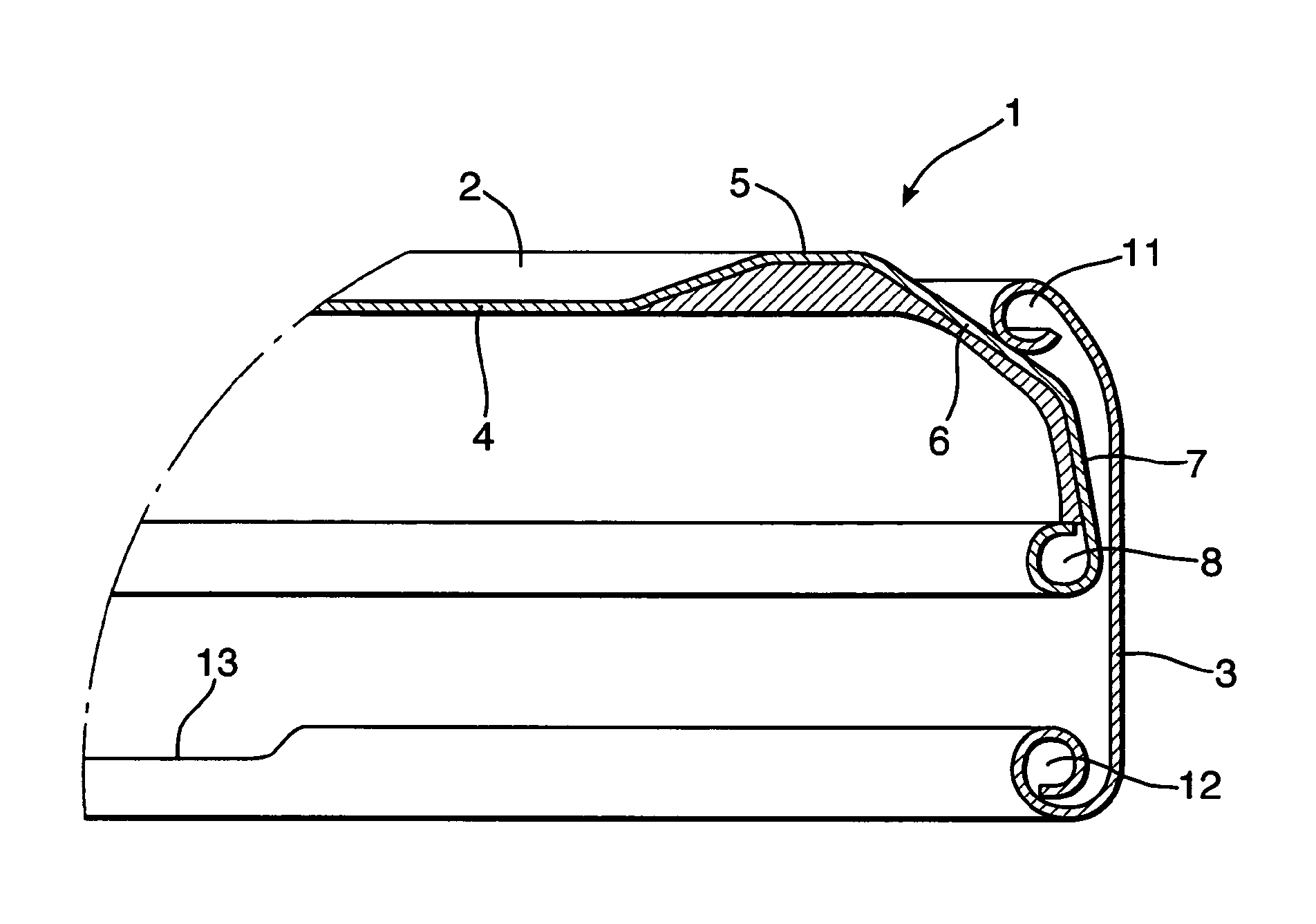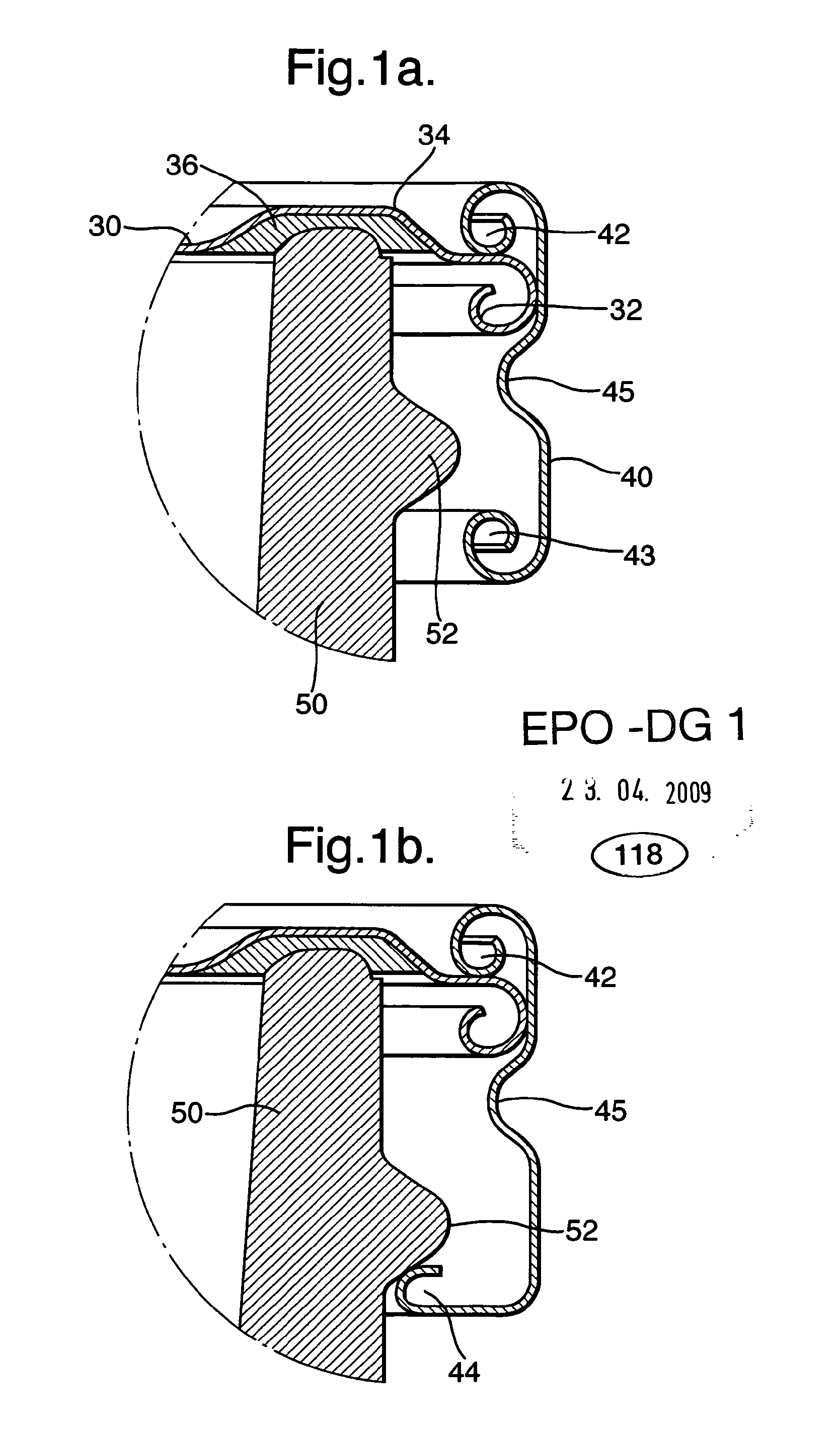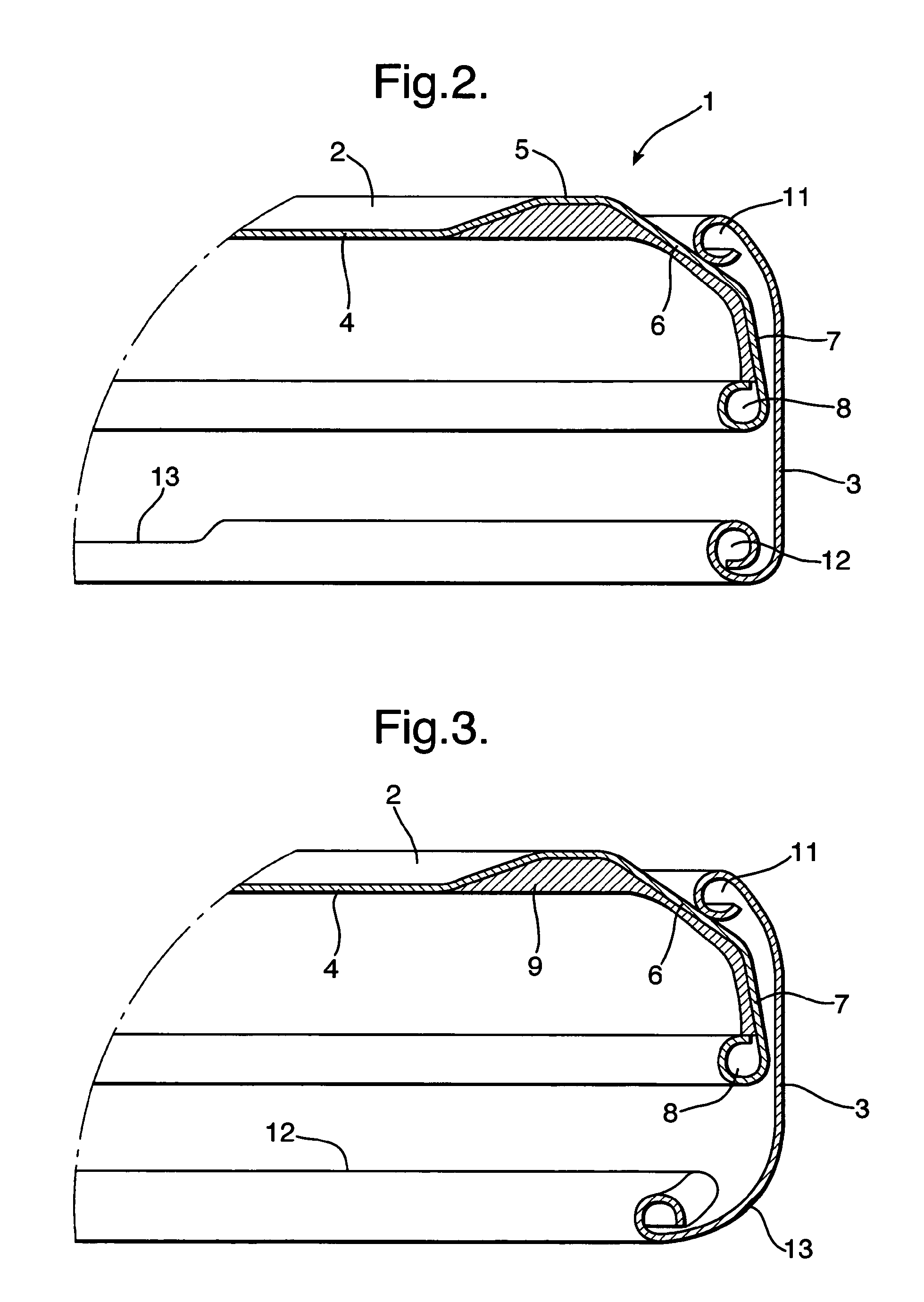Closure
a technology of closure and opening force, applied in the field of closure, can solve the problems of inherent in the combined opening force requirements of unscrewing and breaking the vacuum, and achieve the effects of enhancing the appearance of the skirt, enhancing the protection of the cut edge, and good appearan
- Summary
- Abstract
- Description
- Claims
- Application Information
AI Technical Summary
Benefits of technology
Problems solved by technology
Method used
Image
Examples
Embodiment Construction
[0041]FIGS. 1A and 1B are side sections of a two-part closure manufactured for example in accordance with unpublished patent application PCT / EP2007 / 061744. Alternatively, the ring could be manufactured separately by techniques such as welding (e.g. laser welding), extrusion, or by using tubing. This of course means that the ring is not necessarily formed from metal, although this is the preferred material for closures of this invention. The closure comprises a metal disc 30, having its cut edge protected by a curl 32, and a circumferential ring 40. The disc 30 is trapped within the ring 40 by two curls 42, 43 at the opposed axial ends of the ring. FIG. 1A is a section through a curl 43 and FIG. 1B is a section through a lug 44.
[0042]A retention feature, or features 45 is / are provided to position the disc 30 loosely within the ring 40, whilst allowing the disc 30 freedom to move rotationally relative to the ring 40 and limiting axial movement. The retention feature 45 may take the fo...
PUM
 Login to View More
Login to View More Abstract
Description
Claims
Application Information
 Login to View More
Login to View More - R&D
- Intellectual Property
- Life Sciences
- Materials
- Tech Scout
- Unparalleled Data Quality
- Higher Quality Content
- 60% Fewer Hallucinations
Browse by: Latest US Patents, China's latest patents, Technical Efficacy Thesaurus, Application Domain, Technology Topic, Popular Technical Reports.
© 2025 PatSnap. All rights reserved.Legal|Privacy policy|Modern Slavery Act Transparency Statement|Sitemap|About US| Contact US: help@patsnap.com



